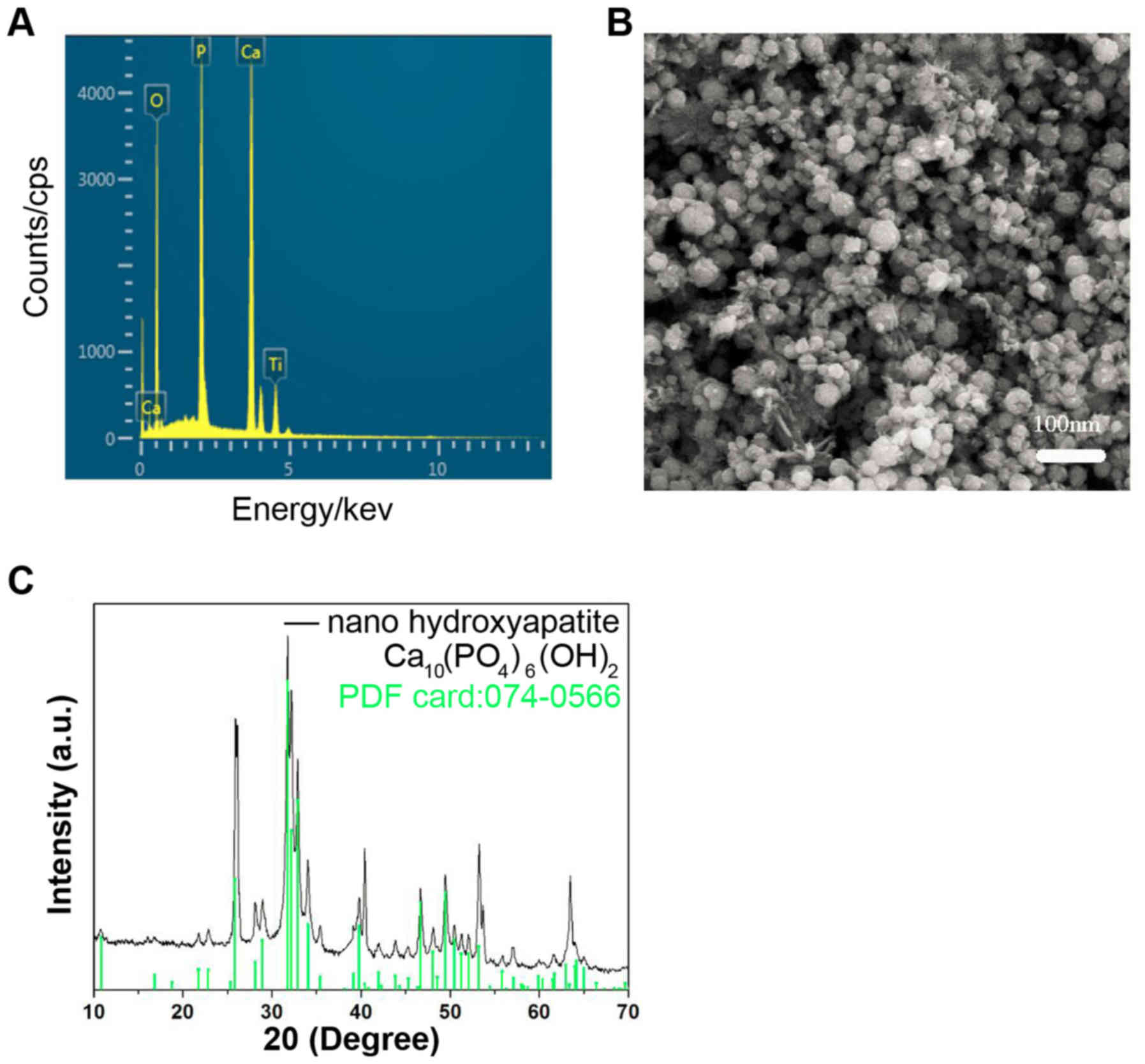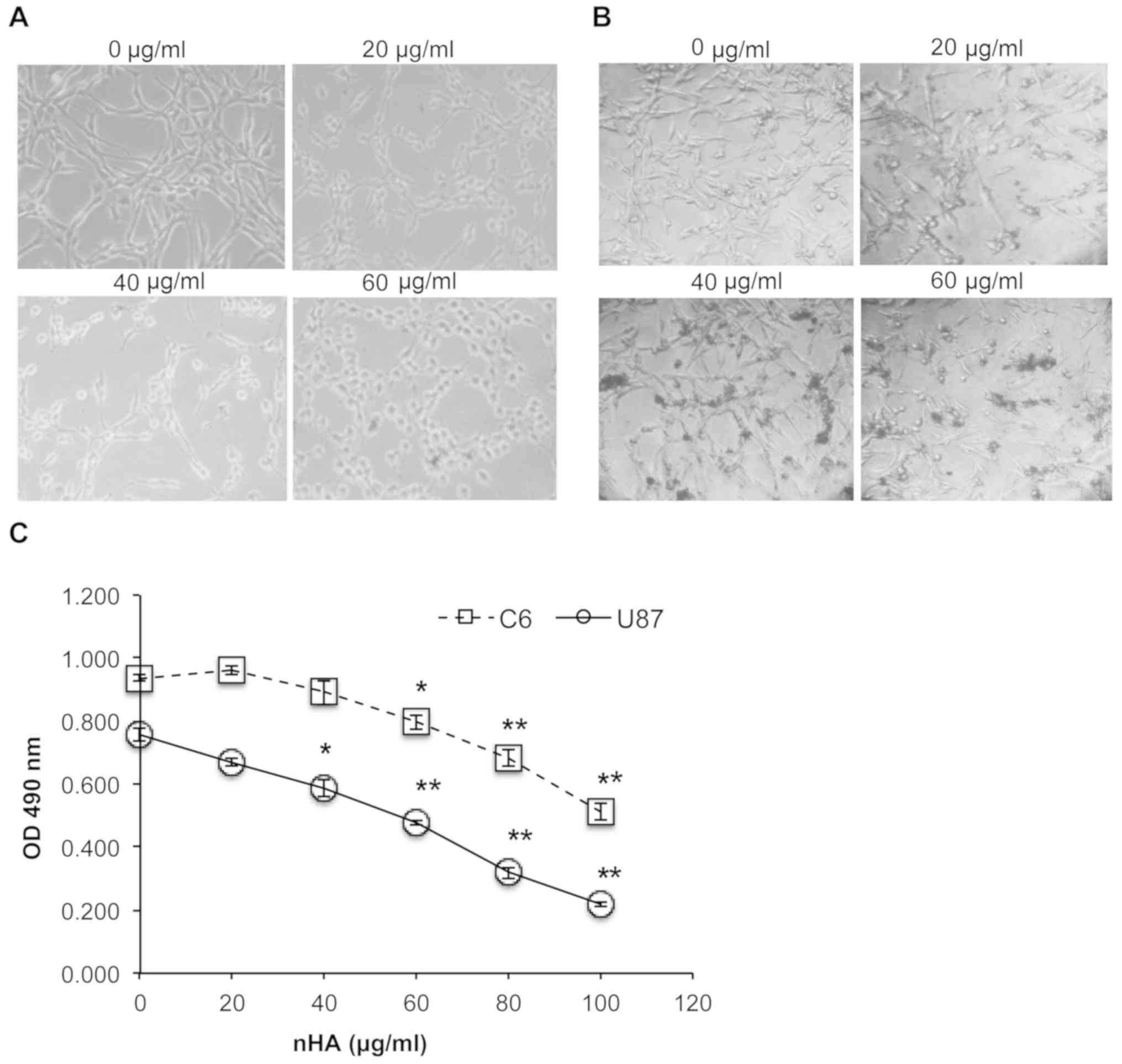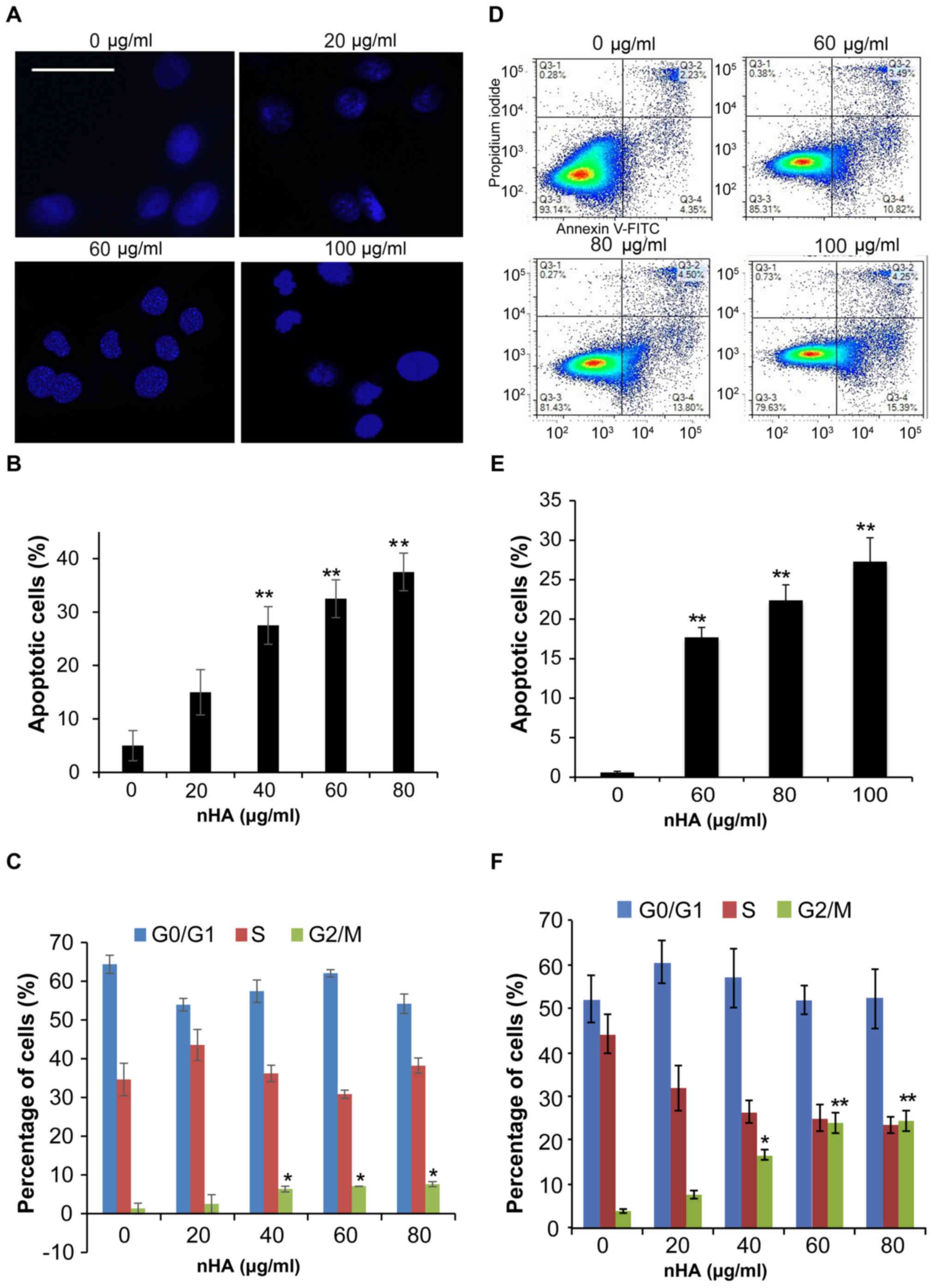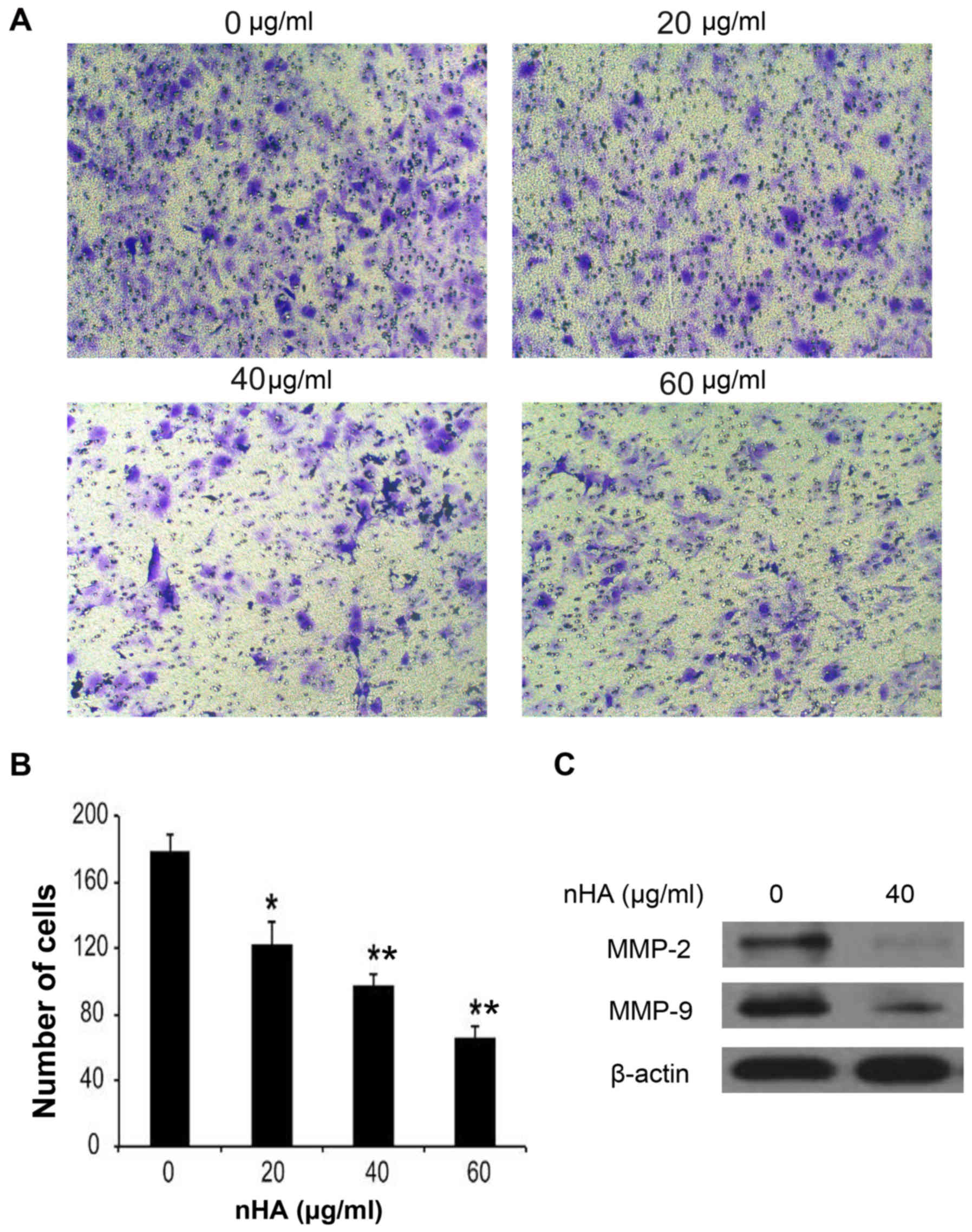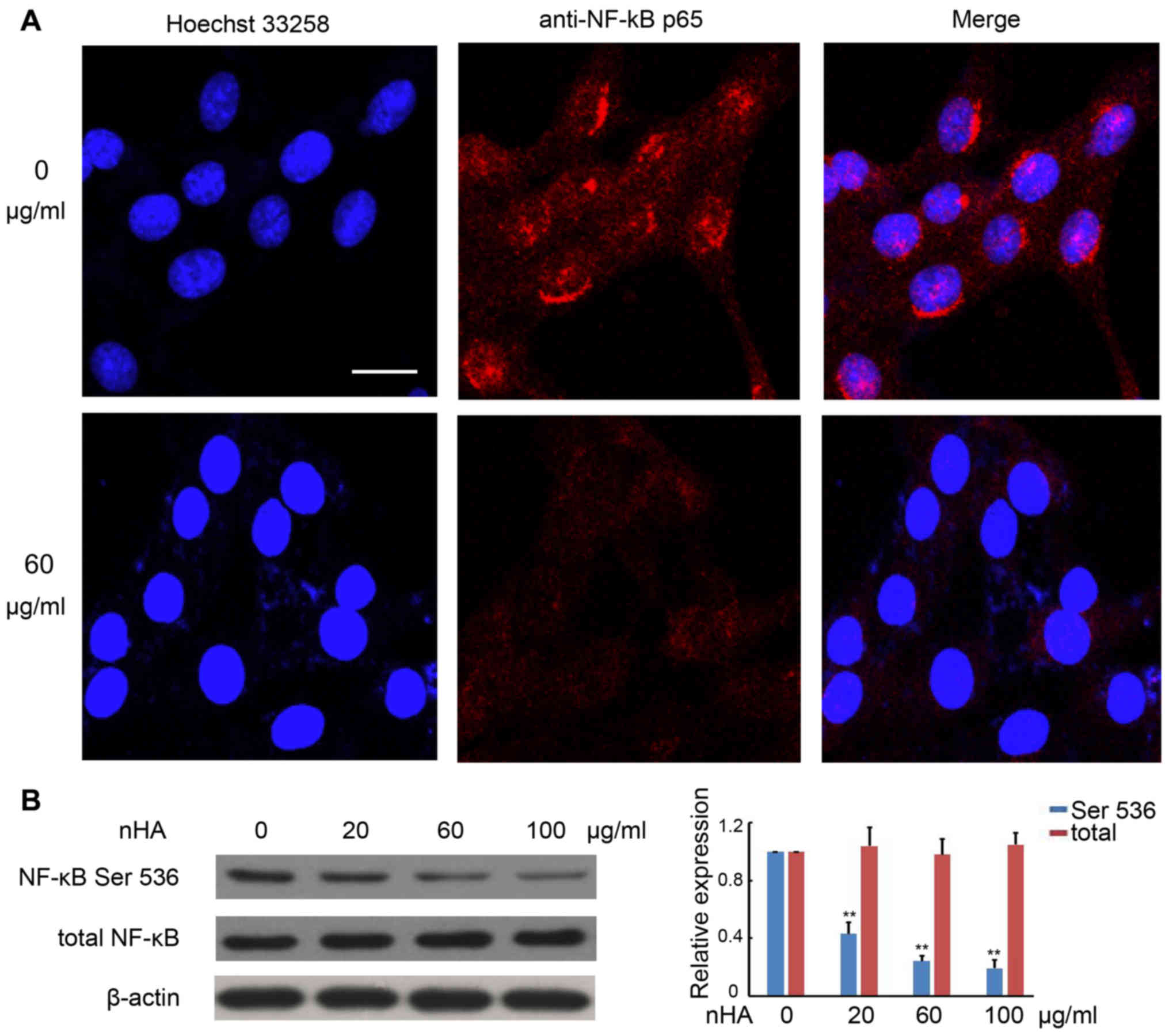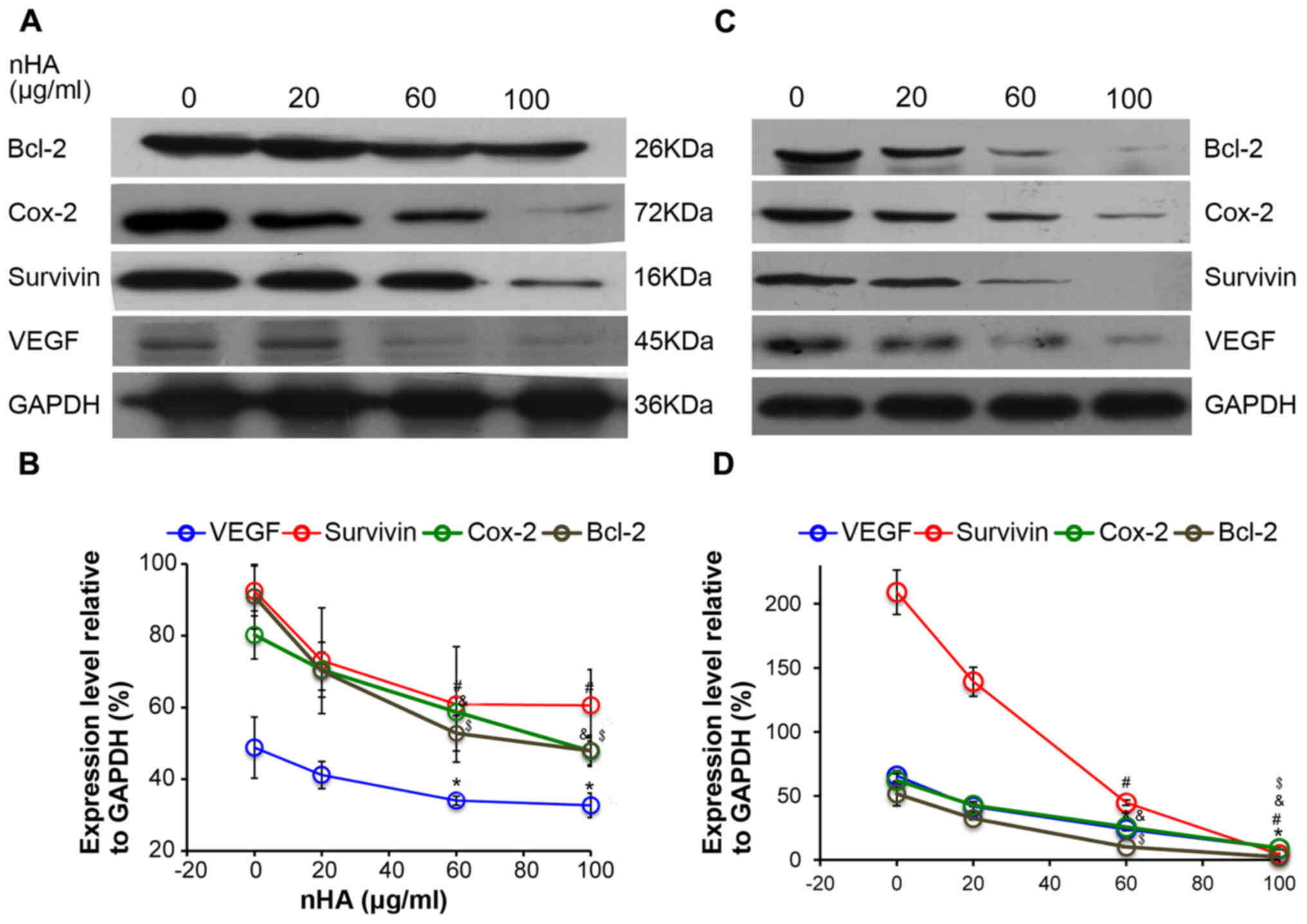|
1
|
Billström GH, Blom AW, Larsson S and
Beswick AD: Application of scaffolds for bone regeneration
strategies: Current trends and future directions. Injury. 44 Suppl
1:S28–S33. 2013. View Article : Google Scholar : PubMed/NCBI
|
|
2
|
Diez M, Kang MH, Kim SM, Kim HE and Song
J: Hydroxyapatite (HA)/poly-L-lactic acid (PLLA) dual coating on
magnesium alloy under deformation for biomedical applications. J
Mater Sci Mater Med. 27:342016. View Article : Google Scholar : PubMed/NCBI
|
|
3
|
Habibovic P and de Groot K: Osteoinductive
biomaterials-properties and relevance in bone repair. J Tissue Eng
Regen Med. 1:25–32. 2007. View
Article : Google Scholar : PubMed/NCBI
|
|
4
|
Hutmacher DW, Schantz JT, Lam CX, Tan KC
and Lim TC: State of the art and future directions of
scaffold-based bone engineering from a biomaterials perspective. J
Tissue Eng Regen Med. 1:245–260. 2007. View
Article : Google Scholar : PubMed/NCBI
|
|
5
|
Yin B, Ma P, Chen J, Wang H, Wu G, Li B,
Li Q, Huang Z, Qiu G and Wu Z: Hybrid macro-porous titanium
ornamented by degradable 3D Gel/nHA micro-scaffolds for bone tissue
regeneration. Int J Mol Sci. 17:5752016. View Article : Google Scholar : PubMed/NCBI
|
|
6
|
Mohamadyar-Toupkanlou F,
Vasheghani-Farahani E, Hanaee-Ahvaz H, Soleimani M, Dodel M, Havasi
P, Ardeshirylajimi A and Taherzadeh ES: Osteogenic differentiation
of MSCs on fibronectin-coated and nHA-modified scaffolds. ASAIO J.
63:684–691. 2017. View Article : Google Scholar : PubMed/NCBI
|
|
7
|
Chen Y, Yang L, Huang S, Li Z, Zhang L, He
J, Xu Z, Liu L, Cao Y and Sun L: Delivery system for DNAzymes using
arginine-modified hydroxyapatite nanoparticles for therapeutic
application in a nasopharyngeal carcinoma model. Int J
Nanomedicine. 8:3107–3118. 2013.PubMed/NCBI
|
|
8
|
Hu J, Liu ZS, Tang SL and He YM: Effect of
hydroxyapatite nanoparticles on the growth and p53/c-Myc protein
expression of implanted hepatic VX2 tumor in rabbits by intravenous
injection. World J Gastroenterol. 13:2798–2802. 2007. View Article : Google Scholar : PubMed/NCBI
|
|
9
|
Chen X, Deng C, Tang S and Zhang M:
Mitochondria-dependent apoptosis induced by nanoscale
hydroxyapatite in human gastric cancer SGC-7901 cells. Biol Pharm
Bull. 30:128–132. 2007. View Article : Google Scholar : PubMed/NCBI
|
|
10
|
Dey S, Das M and Balla VK: Effect of
hydroxyapatite particle size, morphology and crystallinity on
proliferation of colon cancer HCT116 cells. Mater Sci Eng C Mater
Biol Appl. 39:336–339. 2014. View Article : Google Scholar : PubMed/NCBI
|
|
11
|
Li G, Huang J, Li Y, Zhang R, Deng B,
Zhang J and Aoki H: In vitro study on influence of a discrete
nano-hydroxyapatite on leukemia P388 cell behavior. Biomed Mater
Eng. 17:321–327. 2007.PubMed/NCBI
|
|
12
|
Shi Z, Huang X, Cai Y, Tang R and Yang D:
Size effect of hydroxyapatite nanoparticles on proliferation and
apoptosis of osteoblast-like cells. Acta Biomater. 5:338–345. 2009.
View Article : Google Scholar : PubMed/NCBI
|
|
13
|
Shi Z, Huang X, Liu B, Tao H, Cai Y and
Tang R: Biological response of osteosarcoma cells to
size-controlled nanostructured hydroxyapatite. J Biomater Appl.
25:19–37. 2010. View Article : Google Scholar : PubMed/NCBI
|
|
14
|
Yuan Y, Liu C, Qian J, Wang J and Zhang Y:
Size-mediated cytotoxicity and apoptosis of hydroxyapatite
nanoparticles in human hepatoma HepG2 cells. Biomaterials.
31:730–740. 2010. View Article : Google Scholar : PubMed/NCBI
|
|
15
|
Meena R, Kesari KK, Rani M and Paulraj R:
Effects of hydroxyapatite nanoparticles on proliferation and
apoptosis of human breast cancer cells (MCF-7). J Nanopart Res.
14:7122012. View Article : Google Scholar
|
|
16
|
Chu SH, Feng DF, Ma YB and Li ZQ:
Hydroxyapatite nanoparticles inhibit the growth of human glioma
cells in vitro and in vivo. Int J Nanomedicine. 7:3659–3666. 2012.
View Article : Google Scholar : PubMed/NCBI
|
|
17
|
Jacobs VL, Valdes PA, Hickey WF and De Leo
JA: Current review of in vivo GBM rodent models: Emphasis on the
CNS-1 tumour model. ASN Neuro. 3:e000632011. View Article : Google Scholar : PubMed/NCBI
|
|
18
|
Radaelli E, Ceruti R, Patton V, Russo M,
Degrassi A, Croci V, Caprera F, Stortini G, Scanziani E, Pesenti E
and Alzani R: Immunohistopathological and neuroimaging
characterization of murine orthotopic xenograft models of
glioblastoma multiforme recapitulating the most salient features of
human disease. Histol Histopathol. 24:879–891. 2009.PubMed/NCBI
|
|
19
|
Allen M, Bjerke M, Edlund H, Nelander S
and Westermark B: Origin of the U87MG glioma cell line: Good news
and bad news. Sci Transl Med. 8:354re32016. View Article : Google Scholar : PubMed/NCBI
|
|
20
|
Van Antwerp DJ, Martin SJ, Kafri T, Green
DR and Verma IM: Suppression of TNF-alpha-induced apoptosis by
NF-kappaB. Science. 274:787–789. 1996. View Article : Google Scholar : PubMed/NCBI
|
|
21
|
Xu J, Xu P, Li Z, Huang J and Yang Z:
Oxidative stress and apoptosis induced by hydroxyapatite
nanoparticles in C6 cells. J Biomed Mater Res A. 100:738–745. 2012.
View Article : Google Scholar : PubMed/NCBI
|
|
22
|
Zhang D, Tian A, Xue X, Wang M, Qiu B and
Wu A: The effect of temozolomide/poly(lactide-co-glycolide)
(PLGA)/nano-hydroxyapatite microspheres on glioma U87 cells
behavior. Int J Mol Sci. 13:1109–1125. 2012. View Article : Google Scholar : PubMed/NCBI
|
|
23
|
Karin M: Nuclear factor-kappaB in cancer
development and progression. Nature. 441:431–436. 2006. View Article : Google Scholar : PubMed/NCBI
|
|
24
|
Naugler WE and Karin M: NF-kappaB and
cancer-identifying targets and mechanisms. Curr Opin Genet Dev.
18:19–26. 2008. View Article : Google Scholar : PubMed/NCBI
|
|
25
|
Chu SH, Karri S, Ma YB, Feng DF and Li ZQ:
In vitro and in vivo radiosensitization induced by hydroxyapatite
nanoparticles. Neuro Oncol. 15:880–890. 2013. View Article : Google Scholar : PubMed/NCBI
|















